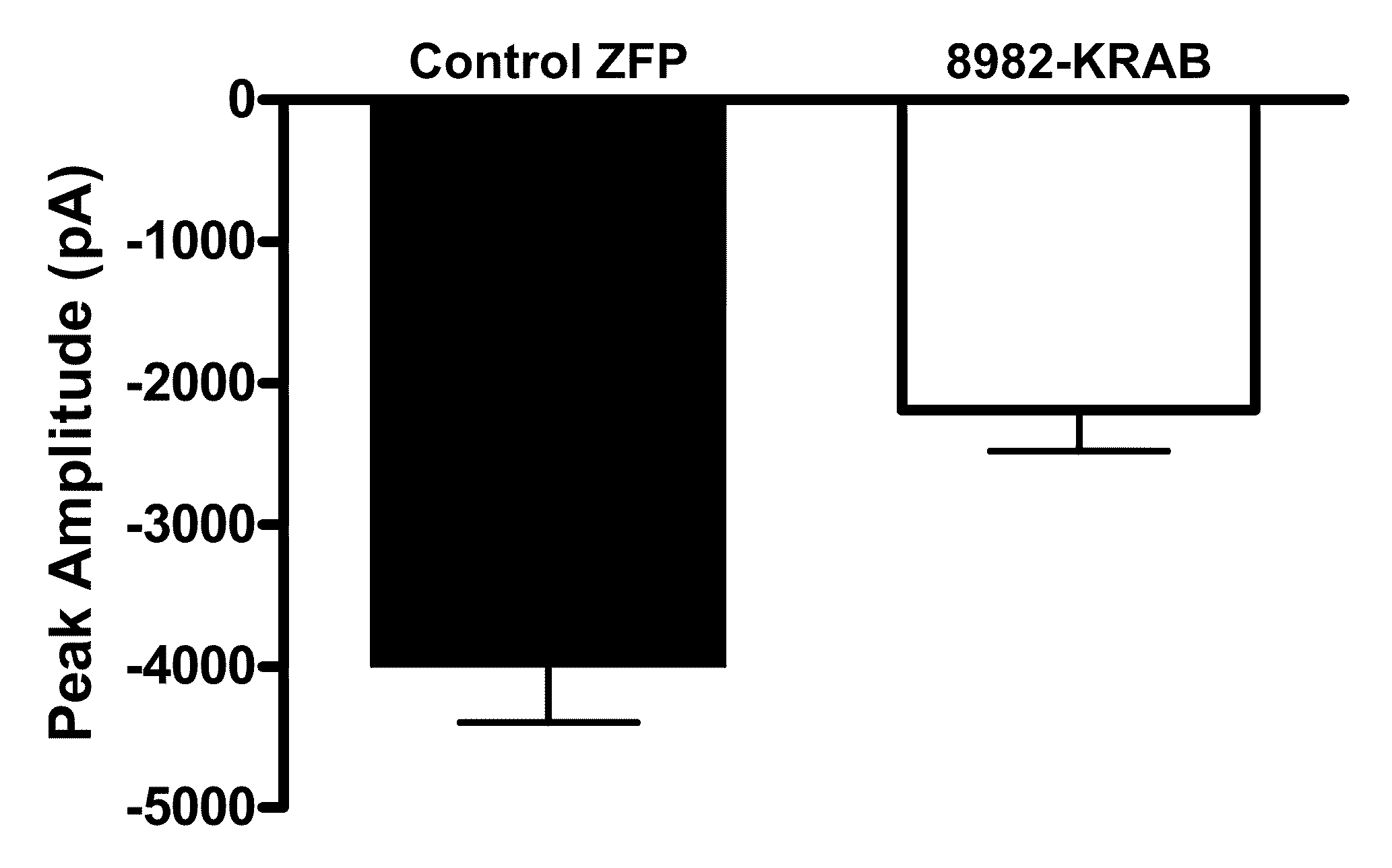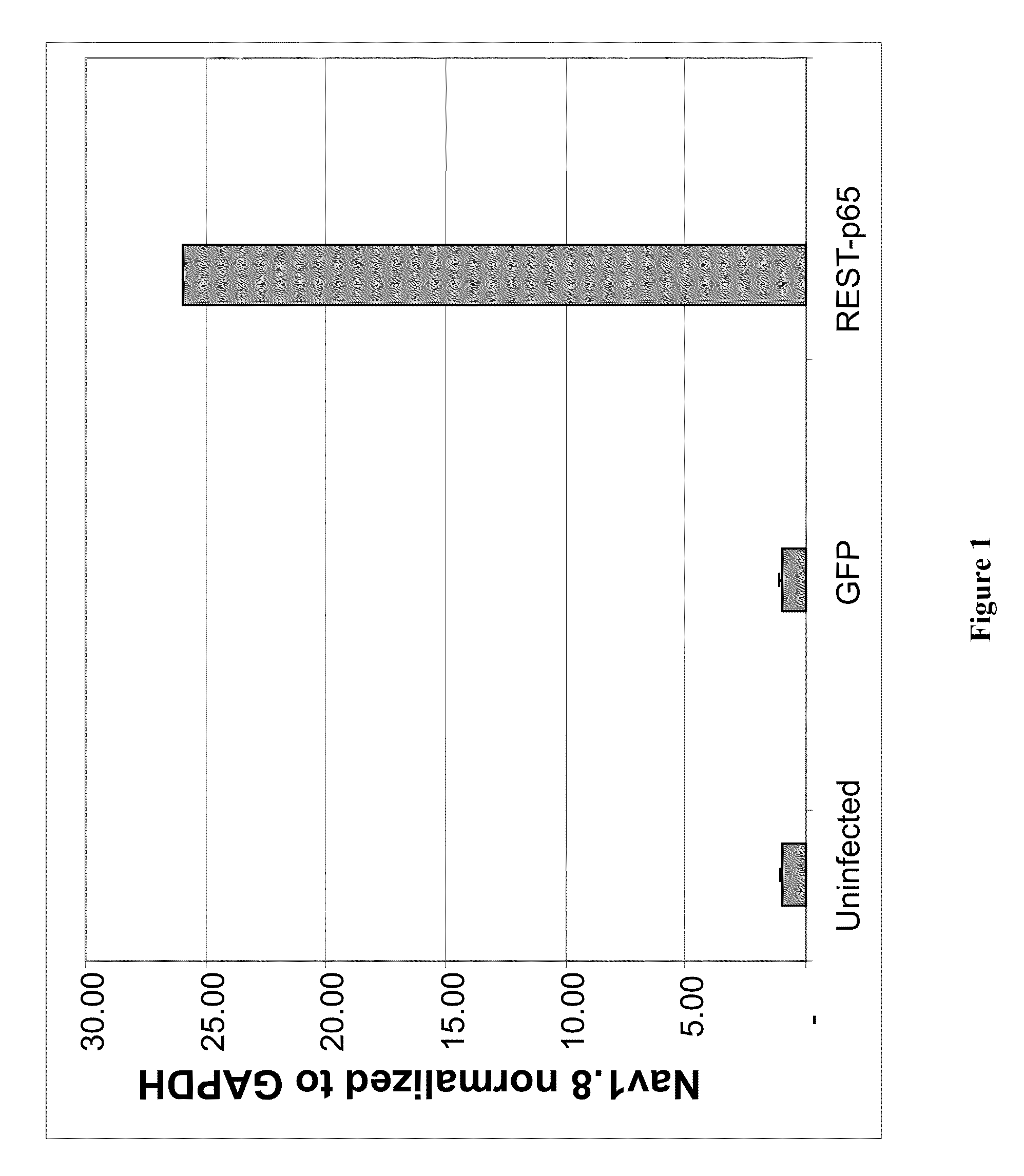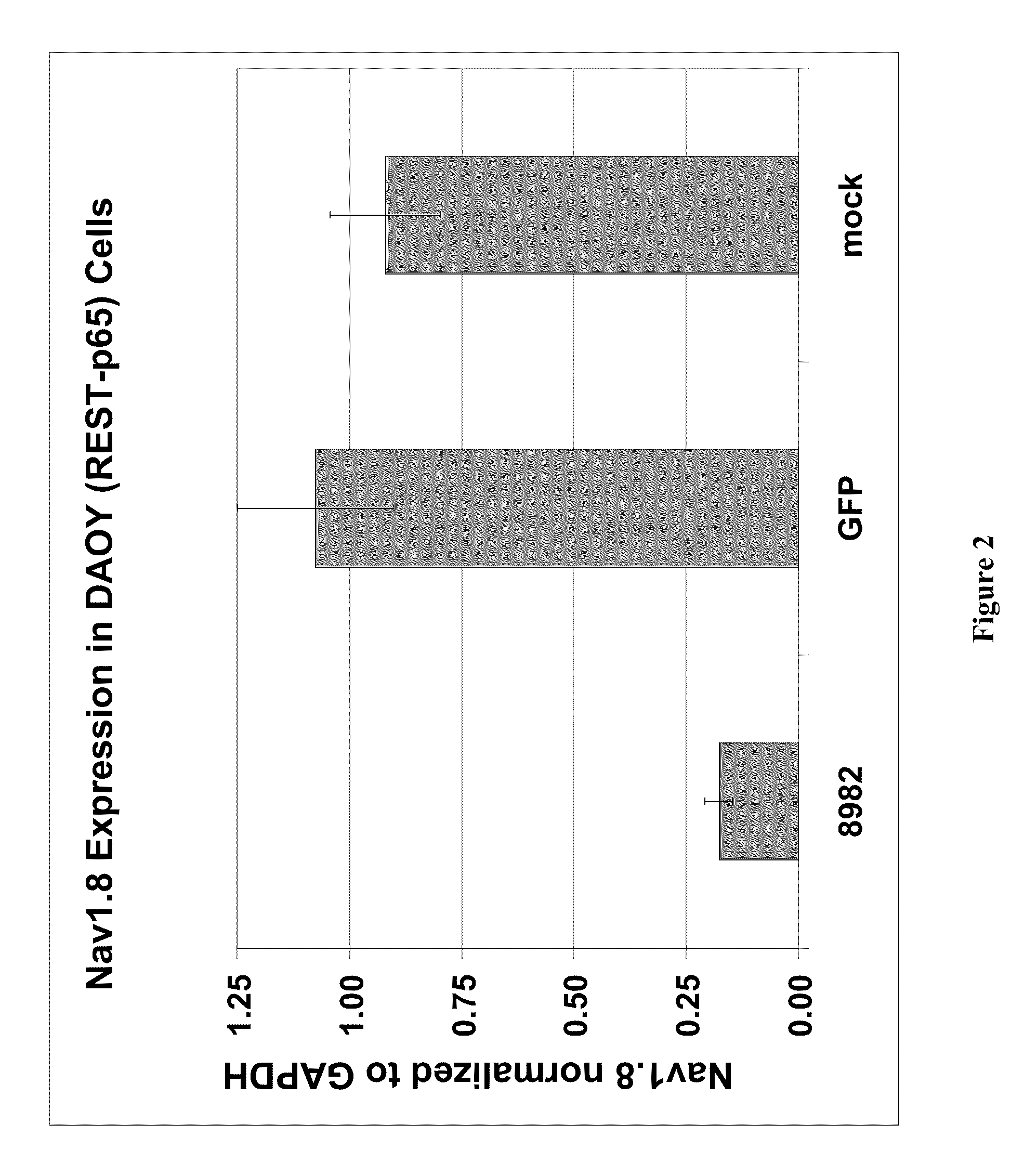Treatment of chronic pain with zinc finger proteins
a zinc finger protein and chronic pain technology, applied in the field of molecular genetics and medicine, can solve the problems of unsatisfactory side effects, few effective treatments, and low treatment efficiency, and achieve the effect of modulating physiological processes and suppressing gene expression
- Summary
- Abstract
- Description
- Claims
- Application Information
AI Technical Summary
Benefits of technology
Problems solved by technology
Method used
Image
Examples
example 1
Materials and Methods
A. Zinc Finger Protein Transcription Factor 8982-KRAB
[0203]ZFP-TF 8982-KRAB consists of a nuclear localization sequence (PKKKRKV (SEQ ID NO:43)) from SV40 large T antigen, an engineered zinc finger DNA-binding domain targeted to the Nav1.8 gene, a KRAB A / B repression domain from KOX1 transcription factor (amino acids 1 to 98), and a flag-epitope tag (DYKDDDDK (SEQ ID NO:44)). The designed DNA-binding domain contains six finger modules, each comprising the composition of amino acids as set forth in Table 1 in reference to ZFP “8982”.
B. Cell Culture, Transfection and Transduction
[0204]Human DAOY cells (ATCC) were cultured in DMEM supplemented with 10% FBS. The DAOY cells were transduced with lentiviral vectors encoding REST-p65, GFP or a zinc finger protein transcription factor (ZFP-TF 8982-KRAB), as described below.
[0205]A self-inactivating HIV-directed vector RRL (see Dull et al. (1998) J Virol 72(11):8463-8471), containing the woodchuck hepatitis post-transcrip...
example 2
Repression of Nav1.8 Gene Expression in DAOY Cells
[0216]A fusion protein (8982-KRAB) comprising a 6-fingered DNA-binding domain designed to recognize a target site in human Nav1.8 and a repression domain was designed as described above in Example 1 and in U.S. Pat. No. 6,607,882. The amino acid sequence corresponding to each finger of the DNA-binding domain is shown in Table 1 with reference to “8982”.
[0217]Sequences encoding the 8982-KRAB fusion protein were introduced into human DAOY cells via lentiviral vectors as described above in Example 1. A lentiviral vector encoding GFP was also prepared for use as a control.
[0218]Nav1.8 expression was analyzed by real-time RT-PCR with normalization to GAPDH as described above with reference to gene expression analysis.
[0219]FIG. 2 shows the results of repression of human Nav1.8 expression using 8982-KRAB. Administration of this Nav1.8-targeted ZFP significantly repressed human Nav1.8 expression.
example 3
Repression of Nav1.8 in Rat DRG Neurons
A. Gene Expression
[0220]The activity of ZFP-TF 8982-KRAB was tested in a primary culture of rat dorsal root ganglion neurons transduced with lentiviral or herpes simplex virus (HSV) vectors as described previously. Nav1.8 gene expression was analyzed by real-time RT-PCR as described above, and normalized to either GAPDH mRNA or peripherin mRNA (a specific marker for sensory neurons).
[0221]As shown in FIG. 3, 8982-KRAB, transduced via a lentiviral vector, significantly repressed Nav1.8 gene expression, resulting in a ˜10-fold reduction in Nav1.8 mRNA levels, compared to GFP controls. FIG. 5 shows a similar repression of Nav1.8 gene expression when 8982-KRAB was delivered via an HSV vector.
B. Protein Expression
[0222]Repression of Nav1.8 was also demonstrated at the protein level. ZFP-TF 8982-KRAB depressed Nav1.8 protein levels in the rat DRG neurons following transduction via lentiviral vectors as described previously, as compared to an unrelate...
PUM
| Property | Measurement | Unit |
|---|---|---|
| Fraction | aaaaa | aaaaa |
Abstract
Description
Claims
Application Information
 Login to View More
Login to View More - R&D
- Intellectual Property
- Life Sciences
- Materials
- Tech Scout
- Unparalleled Data Quality
- Higher Quality Content
- 60% Fewer Hallucinations
Browse by: Latest US Patents, China's latest patents, Technical Efficacy Thesaurus, Application Domain, Technology Topic, Popular Technical Reports.
© 2025 PatSnap. All rights reserved.Legal|Privacy policy|Modern Slavery Act Transparency Statement|Sitemap|About US| Contact US: help@patsnap.com



